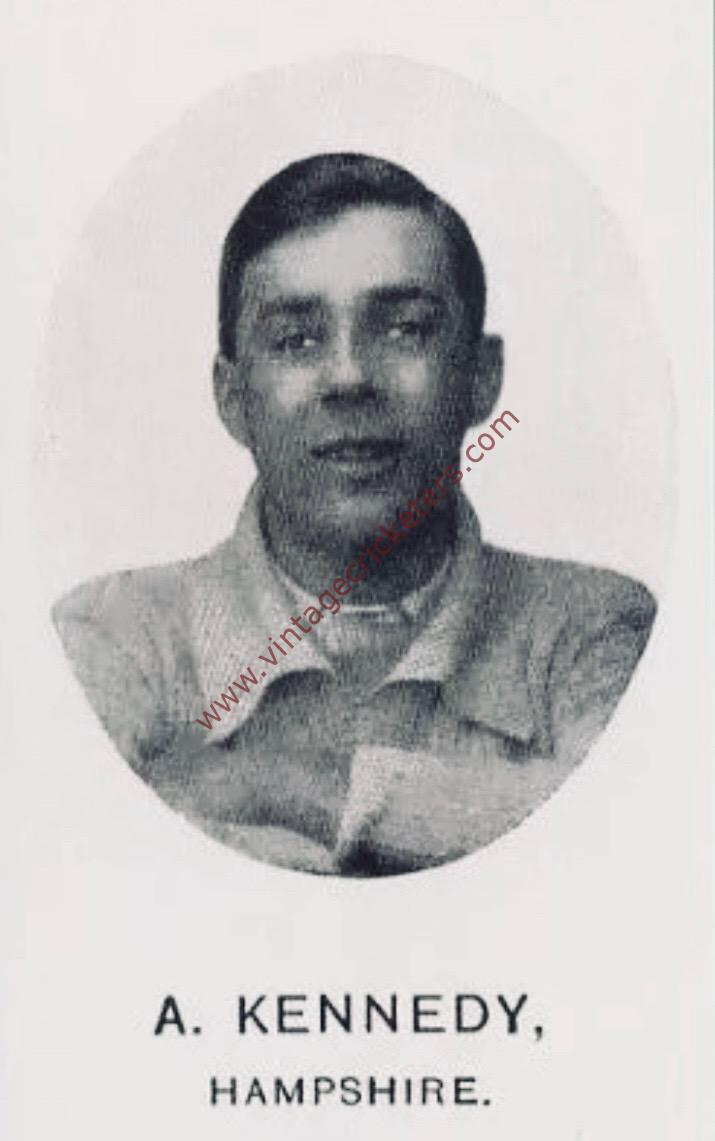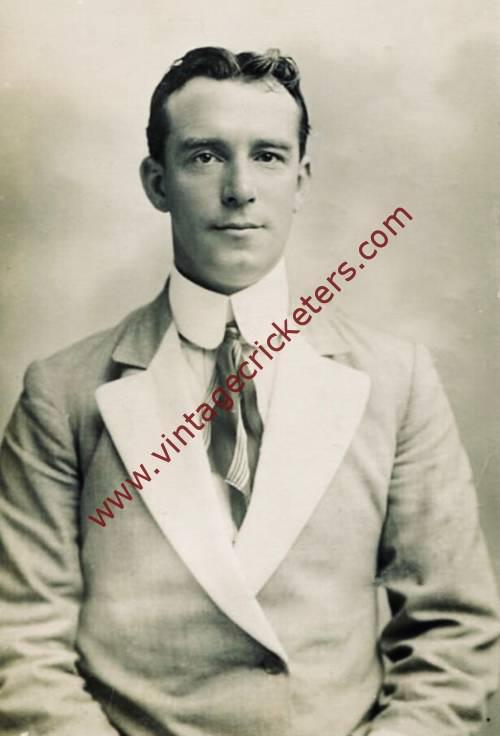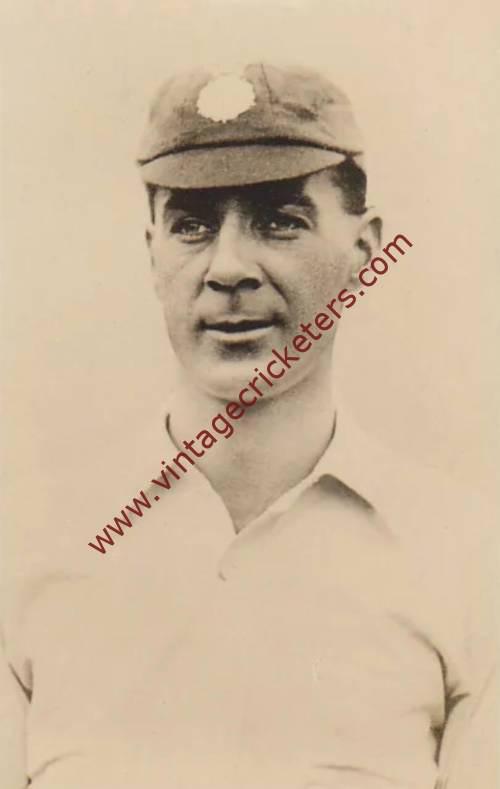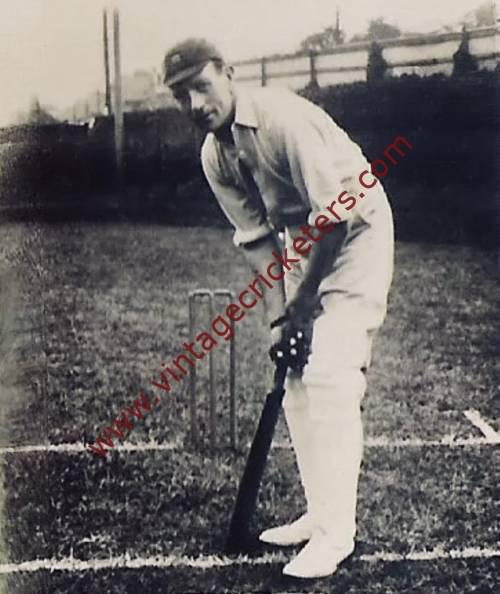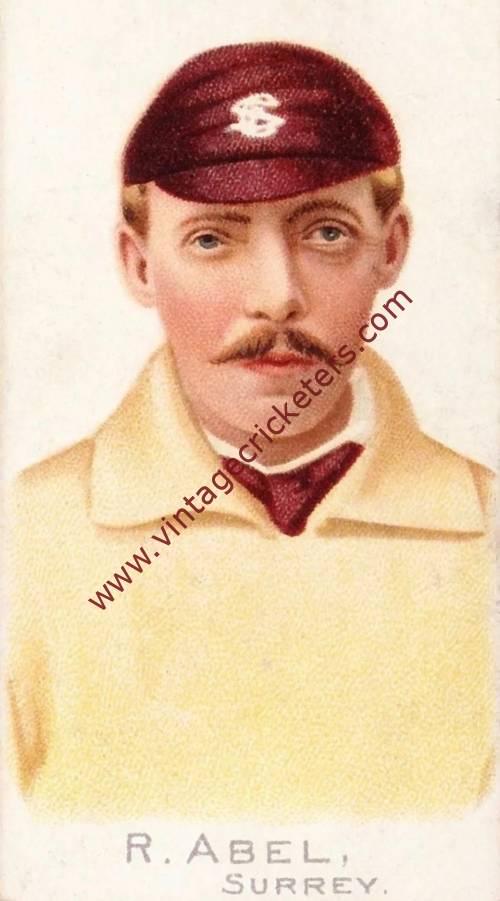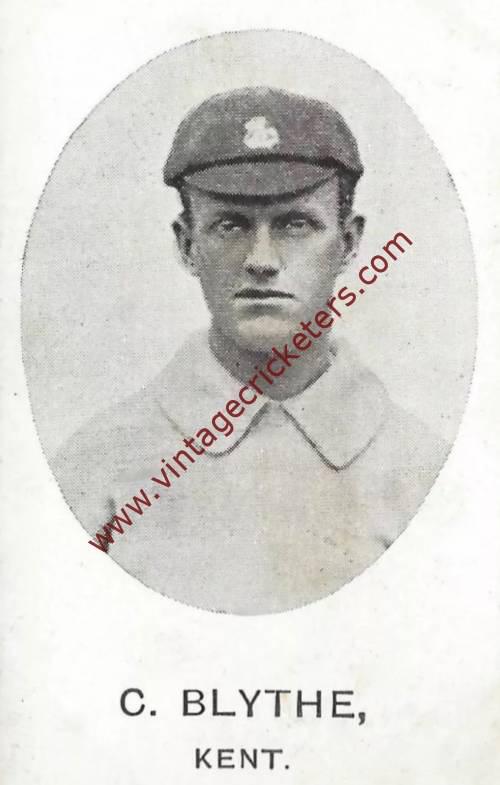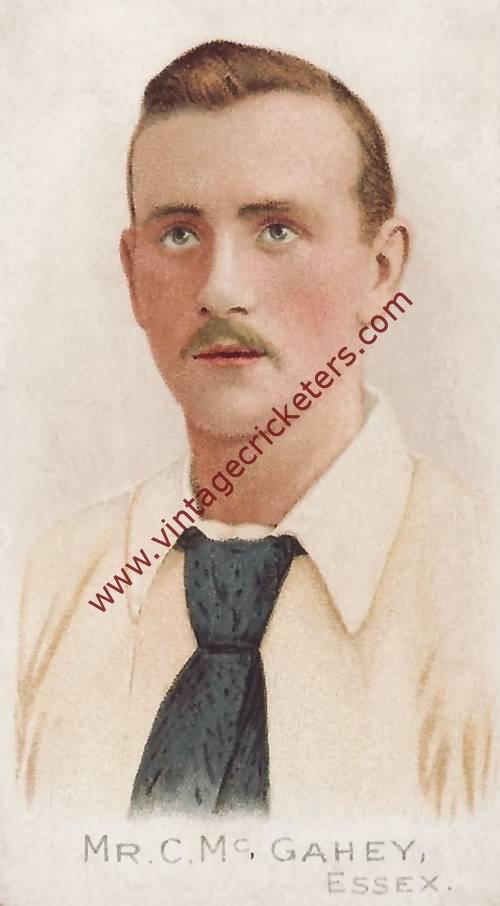Description
Edinburgh, Scotland born Alec Kennedy was a well-built and durable all-rounder who served Hampshire with distinction for almost three decades either side of the First World War. He is one of the ten highest wicket-takers in first class cricket (usually ranked seventh after Rhodes, Freeman, Parker, J.T. Hearne, Goddard, and W.G. Grace).
Kennedy first played for Hampshire he was only 16 in 1907. The County had not had a top-line professional bowler since Tom Soar and Henry Baldwin declined at the turn of the century. He played only irregularly up to 1910, but in 1912 became the third highest wicket-taker in County cricket, with 112 wickets at an average of 17. After injury in 1913, Kennedy rebounded to take 164 wickets, average 20, in 1914.
He bowled medium-pace in and out-swingers – and could do so all day, such was his remarkable stamina – and was also able to cut the ball from leg. On a sticky wicket Kennedy could spin the ball sharply either way, and at times was unplayable, as when he took 7-8 against Warwickshire at Portsmouth in 1927. In 1919 he took 7-47 against Surrey at The Oval, one of only three games Surrey lost at The Oval between the end of the First World War and 1927. Kennedy never generated enough pace off the pitch to trouble the highest quality opposition on good pitches. His failure against the Australians in 1921 was taken to show conclusively that he would have been as ineffective as most English spinners on hard, flat Australian pitches. Even when English bowling was at its weakest Kennedy was never in contention for an Ashes tour.
His batting was usually cautious, although he occasionally revealed the ability to hit out to great effect. He batted at every place from top of the order to bottom – once carrying his bat for 152 – and often opened both batting and bowling. Although he began as a tail ender, Kennedy developed his defence so well that by 1921 he was often opening the batting in addition to bowling more than a thousand overs a season. At times, he could play with great skill, as shown when he made 101 against excellent Kent bowling in 1923 – Wisden said “he was caution itself up to a point, but hit twelve fours”. With the development of his batting, Kennedy was between 1921 and 1923 one of the best all-rounders in the game but he was soon eclipsed by Maurice Tate and Roy Kilner. His batting however was inconsistent and declined during his later career so severely that he did not make a half century in County cricket between the end of 1923 and the middle of 1926.
He took 100 wickets in a season on 15 occasions, doing the double five times, with a best of 205 wickets and 1129 runs in 1921. Surprisingly, he made only five Test appearances, all in South Africa in 1922-23 where he took 31 wickets at 19.32 in his only series, his Test match debut coming at Johannesburg in December 1922, when he made his highest Test score of 41 not out in the first innings. He toured South Africa again in 1924-25 as part of Lord Tennyson’s side and took another 21 wickets in the unofficial Tests, and also took his career best 10-37 for The Players against The Gentlemen at The Oval in 1927.
Apart from a surprise decline in 1926 when he took only 87 wickets despite a good performance against the Australians, Kennedy took over 100 wickets every season until 1932, after which he was selected as one of Wisden’s Cricketers of the Year. The dry summers of 1933 and 1934 saw Kennedy’s bowling decline, but he still played a vital role as Hampshire’s stock bowler.
After retiring in 1936 he coached, initially at Cheltemham College and then from 1947 to 1954 in South Africa. In 677 first class matches he scored 16,586 runs at an average of 18.53 with a highest score of 163 not out amid 10 centuries and 64 half centuries. His bowling produced a fantastic 2,874 wickets at an average of 21.23, taking ten wickets in a match an astonishing 45 occasions and bowling 225 five wicket innings. He also took 531 catches in first class play.
NB when this image was published in 1907, with Kennedy aged 16, he was surely one of the youngest cricketers ever to appear on a cigarette card.

